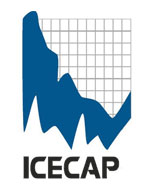by Ron Barmby
Political tunnel vision on global warming has resulted in declaring increases in atmospheric carbon dioxide an existential threat. But the United Nations’ resolve to reduce carbon dioxide levels runs counter to its goals to end world hunger, promote world peace and protect global ecosystems. It fails to address the key question relating to those three goals: Which pathway creates the greatest good to the greatest multitude - reducing or increasing CO2?
The numbers since the year 2000 provide convincing evidence that increasing carbon dioxide has positive impacts and reducing carbon emissions entails dire consequences.
World Hunger
The pre-industrial (circa 1850) atmospheric CO2 concentration of 280 ppm (parts per million) compares to today’s 420 ppm, a 50% increase. Meanwhile, the global population has risen 560%, from 1.2 billion to 8 billion.
Those extra 6.8 billion people are mostly being fed, and it’s not all because of human agricultural productivity, pest control and plant genetics.
Observations of Earth’s vegetative cover since the year 2000 by NASA’s Terra satellite show a 10% increase in vegetation in the first 20 years of the century. Clearly, something other than agriculture is helping to improve overall plant growth.
In a recent study supported by the U.S. Department of Energy, Dr. Charles Taylor and Dr. Wolfram Schlenker quantified how much of that extra greening resulted in food for human consumption since 2000. Using satellite imagery of U.S. cropland, they estimated that a 1 ppm increase in CO2 led to an increase of 0.4%, 0.6% and 1% in yield for corn, soybeans and wheat, respectively. They also extrapolated back to 1940 and suggested that the 500% increased yield of corn and 200% increased yield of soybeans and winter wheat are largely attributable to the 100 ppm increase in CO2 since then.
CO2 fertilization is not only greening the Earth, it’s feeding the very fertile human race.
World Peace
Though adding CO2 to the atmosphere does not promote world peace, attempts to stop CO2 emissions in the western democracies have increased the CO2 emissions, wealth and influence of totalitarian Russia and China.
Eurostat, the statistical office of the European Union (EU), reports that the EU’s reliance on imported natural gas increased from 15.5% of its energy needs in 2000 to 22.5% by 2020. Russia was the main supplier of Europe’s natural gas. Holding Europe’s energy security in its pipelines not only helped finance Russia’s 2021 invasion of Ukraine, but it also limited the economic sanctions Europe could impose in retaliation.
According to the scientific online publication Our World in Data, between 2000 and 2020 the G7 nations lost 13.8% of the world share of GDP and China picked up 12%.
The West (the EU plus the UK, U.S., Canada and Japan) transferred GDP growth to China and energy security to Russia and was able to reduce CO2 emissions from 45% of the global total in 2000 to 25% in 2020. In the same period China’s CO2 emissions grew from 14% of the total to 31%, leading to an increase of 39% in total CO2 global emissions.
The unintended consequence of the West’s attempts to reduce CO2 emissions has been to shore up Chinese and Russian dictatorships-and in Russia’s case, to partly fund the invasion of a sovereign and democratic neighbor, Ukraine.
World Ecology
Much of the human footprint on Earth is where the products we consume originate: We either grow them on the planet’s surface or extract them from within its crust.
In testimony to the U.S. House Committee on Energy and Commerce in 2021, Mark Mills, a senior fellow at the Manhattan Institute, estimated that replacing each unit of hydrocarbon energy by “clean tech” energy would on average result in the extraction of five to 10 times more materials from the Earth than does hydrocarbon production.
Mills also pointed out that Chinese firms dominate the production and processing of many critical rare earth elements and that nearly all the growth in mining is expected to be abroad, increasingly in fragile, biodiverse wilderness areas.
Decarbonization will impose the heavy environmental cost of an unprecedented increase in mining.
One Last Number
Since El Nino induced a modern peak global average temperature in 1998, global warming has been essentially zero.
The numbers don’t lie. Allowing more CO2 emissions is better for ending world hunger, promoting world peace, and protecting global ecosystems.
This commentary was first published at Real Clear Energy, July 6, 2023, and can be accessed here.
Ron Barmby, a Professional Engineer with a master’s degree in geosciences, had a 40-year career in the energy industry that covered 40 countries and five continents. He is author of “Sunlight on Climate Change: A Heretic’s Guide to Global Climate Hysteria” and is a proud member of the CO2 Coalition, Arlington, Virginia.




